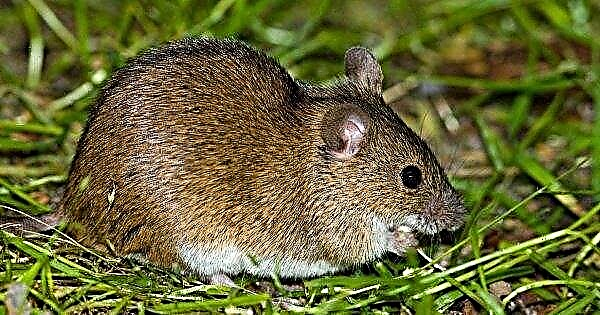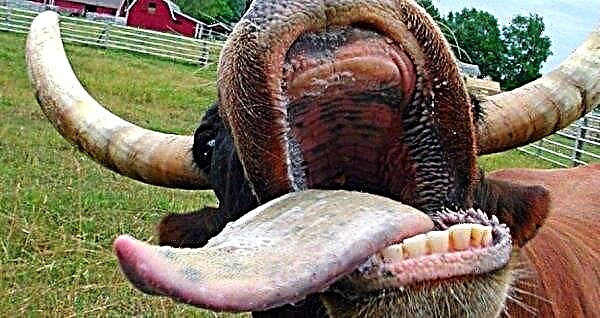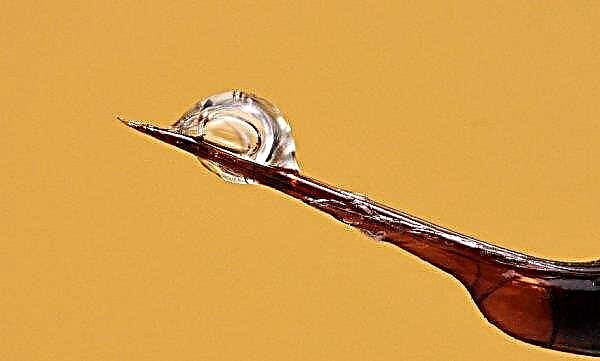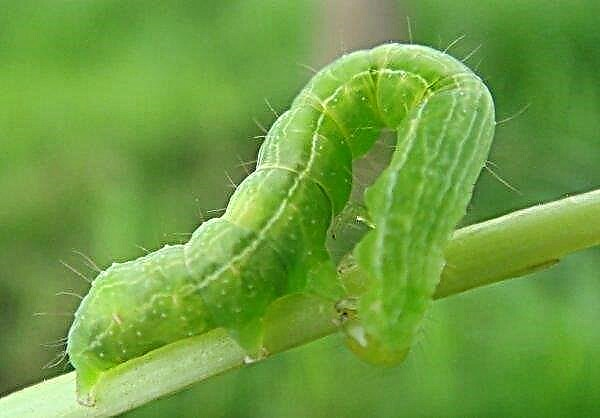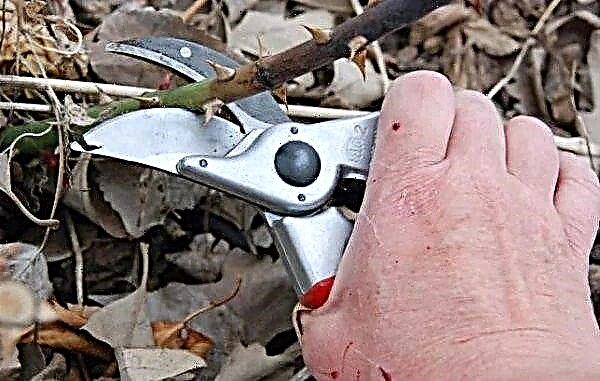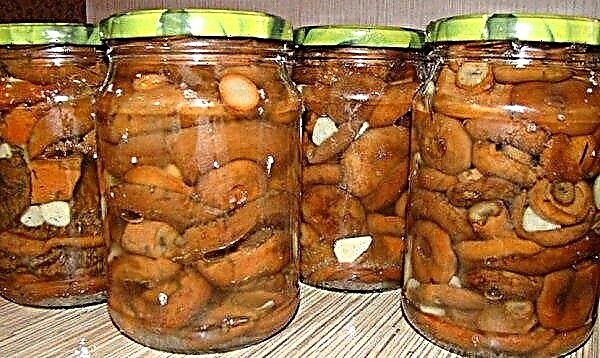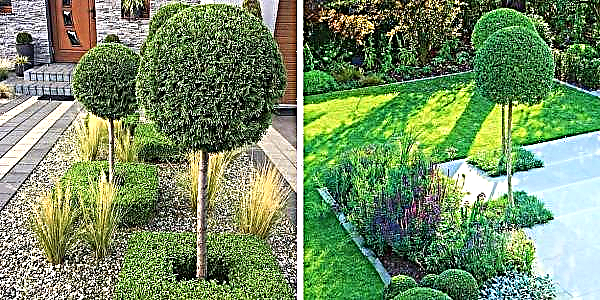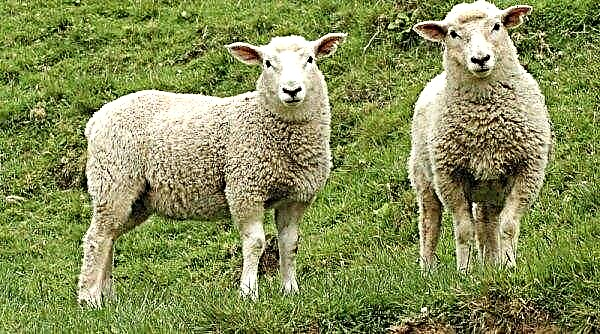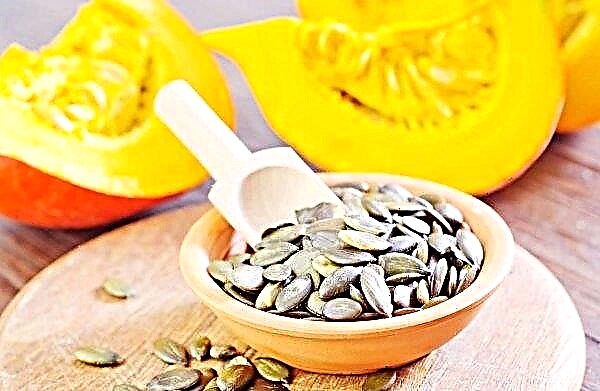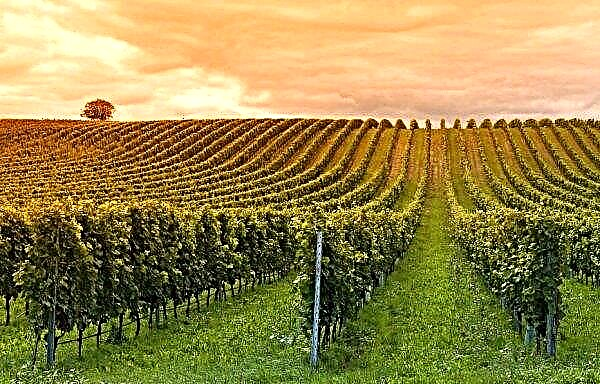The multi-tiered onion is a perennial herb from the Onion family. In our country this culture is extremely rare, although it has similar characteristics with onions. Those who decided to grow such an onion in their area, note its unpretentiousness. What other features of this plant are there, and how to grow it correctly - we will tell further.
Description of the bunk bow
It is believed that the two-story, or two-story bow is a native of Gorny Altai, Eastern Siberia, and Northern Mongolia. It got its name due to its unusual appearance, or rather, the appearance of the ejected arrow.
Important! The plant spends all the nutrients for the ripening of the crop, so it does not bloom for long.
Onions at the end of the arrow have a flower stalk, and on a tiered one there are tiny onions. They are located in two or more tiers. The first tier appears at a height of 60 cm from the surface of the earth. These bulbs give shoots 10-15 cm long, on which new bulbs appear.
The leaves are similar to the leaves of onion. Their appearance is similar, but to the touch they are more elastic and juicy, hollow inside. In length they reach 40–50 cm, in width - 1.5–2 cm. The largest bulbs are formed on the first tier. In diameter, they are about 2-3 cm, weigh an average of 15-25 g.
On each subsequent tier, the bulbs are already smaller. Among them, flowers appear on long peduncles. Small bulbs that appear on tiers can be used to propagate the plant. After planting in moist soil after 21–28 days, you can enjoy young herbs.
Technology
The onion bulbs are propagated by the upper bulbs or by dividing the underground part. But the latter option is not entirely profitable. The culture does not give seeds, since the flowers fade during growth. The only option for propagating the culture is with the upper bulbs.
The degree of their maturity is determined by the brown tubercles that appear in the root zone. They need to be planted in the year of collection. They are stored for 2-3 months, and planting is best done from late August to late September.
Did you know? In terms of onion consumption per capita, Libya ranks first in the world. The average resident of this country eats 33 kg of vegetable per year.
The plant tolerates frosts well and quickly enters growth in the spring. The only thing that can harm him is sharp temperature jumps. You can plant such onions on both heavy and light soils, the plant takes root well everywhere. Depending on the type of soil, you need to change the depth and density of planting.
On heavy soils, dense landing in rows is carried out. Between the bulbs leave 15 cm, between the rows - 20 cm. On the bed should be 2-3 rows. On light soils, you need to plant with an interval of 25 cm between the bulbs and 30 cm in the aisle. On the bed can be any number of rows, but it is better not more than 5 to make it more convenient to process the beds.

Before planting the bulbs, it is recommended to sort by size. They are divided into 3 groups: large, medium, small, which are planted separately. You need to deepen the bulb by a maximum of 6 cm, a minimum of 3 cm. Before planting, the soil on the bed must be fertilized. If planting onions as an annual plant is planned, then 20-30 g of nitrogen, 50 g of phosphorus and 30 g of potash fertilizers are added.
For long-term cultivation, add organic matter (manure or humus) at the rate of 5–7 kg / 1 m². After fertilizing, the bed is dug up. To get greens next year as early as possible, planting must be carried out until mid-August. If planted in autumn, then the greens will appear 7-10 days later, and the yield will fall 15-20%.
How to care for culture
The culture planted at the end of summer manages to take root and release the first leaves before the frost. During this period, the soil needs to be loosened so that the onion fly does not start.
Top dressing
Top dressing is carried out in the spring. Mineral complexes with the content of nitrogen, phosphorus, and potassium are introduced. Each mineral is taken in 20, 40 and 15 g, respectively. Organics are also added at the rate of 5-7 kg / 1 m².
Watering
Watering should be moderate and regular. Water the plant as the soil dries.

How to resist pests and diseases
This variety of onions has good immunity to most diseases and pests. However, it can sometimes be affected by fungal diseases, such as powdery mildew and peronosporosis.
If they appear, the plants are treated with Bordeaux fluid at weekly intervals. Onion plantations can also attack weevils and onion flies. To avoid their appearance, it is necessary to timely remove dried leaves and weeds.
Loosening and weed control
To saturate the soil with oxygen, the bed must be loosened weekly. This will also make it easier to weed.
Did you know? The image of the onion was discovered by archaeologists in the tomb of Tutankhamun, dated 1352 BC. e.
Preventive measures
It is much easier to carry out preventive treatment of plantings than to fight diseases and pests.
From pests
In order to avoid the attack of pests, it is necessary to clean weeds, dry foliage, rotten feathers in a timely manner.
From diseases
To prevent the development of diseases, it is necessary to follow the rules of crop rotation (onions in one place can grow no more than 1 time in 4-5 years), properly water, plant healthy seed material. In order to avoid diseases, you need to choose the right place for landing, as well as timely fertilizer.

Features of harvesting and storage
For the first time, greens are torn off 25 days after emergence. Re-cut the greens after 25-30 days. For the third time, it is undesirable to cut the greens so that there is a good crop of air bulbs.
The heads are harvested at the end of August, when they become brown and will easily separate from the arrow. Harvest well dried and sent for storage in a dry and cool place, while packing the bulbs in paper bags.
As you can see, growing multi-tiered onions does not bring much trouble. With proper care, it gives a rich harvest.Important! The optimum temperature for storing bulbs is 0 ... + 4 ° C, humidity — 80–90%.

